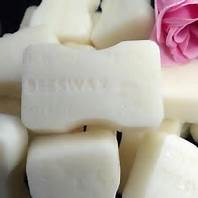How thread lifts differ to facelifts – and filler injections



















How thread lifts differ to facelifts – and filler injections
At present, “there is a surge in popularity for thread lifts,” reveals Dr Joanna Christou of the Cosmetic Skin Clinic, “as they are convenient, low risk and the results are highly satisfactory”. Indeed, it would be easy to assume that the treatment is the ultimate non-surgical alternative to a traditional face lift. But it’s not quite as simple as that. “The threads we’re doing in our clinic aren’t a replacement for surgery,” her colleague, Dr Johanna Ward, tells us, warning that “it can be an underwhelming procedure on the wrong patient”. However, “thread lifts are a fantastic interim option, and can postpone the need for surgery by quite a few years,” Dr Christou feels.
The lifting procedure – which is used to sculpt the face – is also an alternative to dermal filler, though it’s often used in tandem with injectables. A suitable candidate for a thread lift, feels Dr Sarah Tonks of The Lovely Clinic, are those who “aren't ready for a facelift, but don't want to make their face bigger with fillers”.
Here the doctors answer all your questions on thread lift procedures – from the benefits to the results you can realistically expect.
How do thread lift treatments work?
“Threads are made up of a fine stitching material that is used routinely in medical surgery,” explains Dr Christou. “There are lots of different types of threads,” adds Dr Tonks, “but broadly you can divide them into two groups for cosmetic use: threads which are for suspension – they have small indentations on the thread which engages with the tissue to give the lifting – and those which are more for collagen stimulation and can give a little volume”.
“When placed carefully in position, the threads can lift a jowl, define the jawline, and tighten sagging areas very effectively,” adds Dr Christou. “Placed under local anaesthetic injections, the downtime is minimal, and the effects are long-lasting, making them a great option for someone who wants to postpone the need for a facelift.”
What are the main benefits of a thread lift?
“Threads are a minimally invasive skin-tightening procedure,” confirms Dr Christou. Benefits include “lifting, tightening, firming, and a reduction of wrinkles and laxity,” adds Dr Tonks. “Long term they stimulate collagen,” adds Dr Christou, which compounds these benefits. “With very minimal downtime and immediate results, it is a popular choice for the right candidate,” she continues.
Who is a suitable candidate for a thread lift?
Dr Christou explains: “To achieve the best results there needs to be the correct amount of ‘scaffolding’ support to the face, in other words, not over-filled or under-volumised. This provides the platform to allow the threads to tighten lose skin maximally and naturally.”
Dr Tonks agrees, adding that “someone with mild-to-moderate skin laxity and loss of firmness” will see the greatest impact. “Most of my patients are 35-to-55. They aren't ready for a facelift, but they don't want to make their face bigger with fillers.”
“A suitable candidate would also need to be able to adhere to the aftercare instructions, which limits physical activities for a period of time to allow for appropriate healing,” adds Dr Christou.
How does a thread lift compare to a surgical facelift?
“If you are deemed to be a surgical candidate then the threads will be limited on what they can achieve,” notes Dr Christou. “However, some people just want to avoid going under the knife and, with careful planning, a satisfying amount of lift can be achieved. Threads will never fully replace surgery, but a thread lift is a fantastic interim option, and can postpone the need for surgery by quite a few years.”
How does a thread lift compare to dermal fillers for facial contouring?
Threads and fillers are very different, Dr Tonks explains. “Some patients don't need more volume in their face; they need skin contraction and lifting. Adding more and more volume can result in the face looking puffy.”
“There aren’t any injectable treatments that can do what threads do,” Dr Christou concurs, “but they can go hand-in-hand”. A good aesthetic doctor would be able to consult holistically and point you in the right direction to deliver the result you want, she feels. “In most instances, a combination of perhaps a little bit of filler with the threads will be the best outcome.”
What does it feel like to get a thread lift?
“Threads are placed following local anaesthetic numbing injections,” Dr Christou explains. “This means the procedure feels like a strange tugging on the skin – like being numb at the dentist, for example – and having an awareness of what’s happening but not actually being able to feel or interpret it. It is a remarkably pain-free experience and even post-procedure very few people feel the need for paracetamol.”
Typically, you are in the clinic for 90 minutes, she explains. “This includes time to discuss the procedure again [after an initial consultation] and ensure there aren’t any last-minute questions; the procedure itself; and then talking through of the aftercare details. One month later, I always like to see patients back in the clinic to see the final result.”
Results last 18-to-24 months, the doctors agree. “Generally they last two years if the treatment is done well and the post-treatment instructions are followed,” explains Dr Christou.
What is the downtime and aftercare advice?
Unlike surgery, “the downtime is very minimal, and patients can expect some mild tightness, possible bruising or swelling,” explains Dr Christou. However, “threads are a bit more invasive than filler,” notes Dr Ward, “so the aftercare needs to be a little bit more precise”. Therefore, “in the initial period, when the threads are delicate, minimising physical activity is required,” says Dr Christou. This means “no exercise for two weeks after having long threads, or for a couple of days after having shorter ones,” adds Dr Tonks. “Additionally, I usually also recommend avoiding alcohol and touching the face too much,” adds Dr Christou. “Patients can continue with other facial treatments after one month.”
What else is important to know when considering a thread lift?
“There are an increasing number of treatment options and having a thorough consultation to decide what is best for you is mandatory,” says Dr Christou.
Articles-Latest
- Skin tags: Why they develop, and how to remove them
- So That’s Why Your Skin Gets Crepey As You Get Older
- Eye Infection from False Eyelashes
- Teeth stain removal and whitening solutions
- Benefits of collagen for skin
- Why vitamin E should be part of your skincare regime
- Can gray hair be reversed?
- Hair loss affects 1 in 10 women before the menopause – here’s how to treat it
- Conscious ageing and Black skin: What happens when Black does crack?
- Your skin color may affect how well a medication works for you — but the research is way behind
- The C word Cancer
- Astringents
- How does light therapy work? The science behind the popular skincare treatment
- The Most Offensive Fashion Police Criticisms of All Time
- Everything you need to know about lip filler migration, as told by the experts
- Pig semen and menstrual blood – how our ancestors perfected the art of seduction
- Everything you need to know about benzoyl peroxide
- We've bleached, relaxed, and damaged our hair to make ourselves look more white
- Will this be the year that facial filler is cancelled?
- Shock of the old: 10 painful and poisonous beauty treatments
Cosmetic ingredients
LOGIN
Who's On Line
We have 43 guests and no members online
Articles-Most Read
- Home
- White Bees Wax
- Leucidal
- Cosmetic Preservatives A-Z
- Caprylyl Glycol
- Cosmetics Unmasked - How Safe Are Colorants?
- Cosmetics Unmasked - Choosing Ingredients
- Cosmetics Unmasked - Colorants And Fragrances
- EcoSilk
- Toxic Beauty - Who's Looking At Cosmetics?
- Cosmetics Unmasked - Fragrances
- Microbes and Cosmetics
- Chemicals Lingering In The Environment
- Microbes and Safety Standards
- Yellow Bees Wax
- Potassium Sorbate
- Toxic Beauty - Hazardous To Your Health
- Synthetics In Cosmetics - The Industry Fights Back
- Fresh Goat's Milk Soap
- Active Ingredients
- What's Happening in the USA - Cosmetic Regulations - Toxic Beauty
- Cosmetics Unmasked - Listing Cosmetics
- Toxic Beauty - Cocktails and Low Doses
- Natural Waxes A-Z
- Natural Butters A-Z



